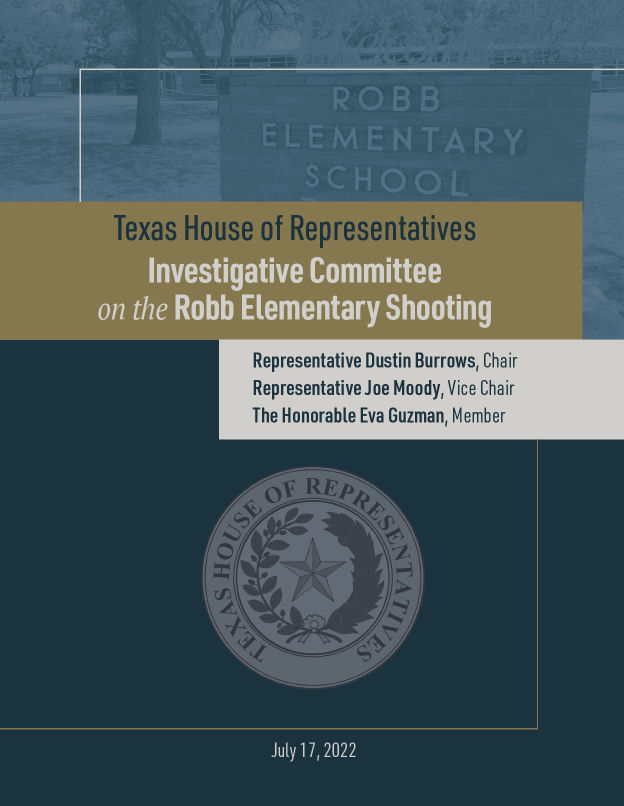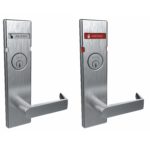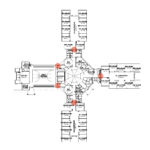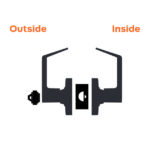 Earlier this week, a Texas House investigative committee released a preliminary report on the tragic May shooting at Robb Elementary School, which resulted in 21 fatalities. Facts found in this preliminary report may change as more information is learned, and other agency reports have not yet been released. However, the details shared in this report highlight the all too familiar conflict between security and convenience. A facility could have a solid plan in place, with the doors and hardware needed to help ensure the necessary level of security, but convenience is an important consideration. When security protocols create a situation that is challenging for building occupants, modifications made to allow access often put those protocols in jeopardy.
Earlier this week, a Texas House investigative committee released a preliminary report on the tragic May shooting at Robb Elementary School, which resulted in 21 fatalities. Facts found in this preliminary report may change as more information is learned, and other agency reports have not yet been released. However, the details shared in this report highlight the all too familiar conflict between security and convenience. A facility could have a solid plan in place, with the doors and hardware needed to help ensure the necessary level of security, but convenience is an important consideration. When security protocols create a situation that is challenging for building occupants, modifications made to allow access often put those protocols in jeopardy.
This was the topic of a recent article by the Partner Alliance for Safer Schools (PASS): More Secure, Less Convenient: The Debate on Classroom Door Locks.
From the PASS article:
“Getting schools the right equipment is just the first step; implementation through robust school policies is equally important. All too often, teachers aren’t consistent about locking their own classroom doors, even with the appropriate hardware. This is because getting up to let students in when they’re late or coming back from the bathroom becomes a distraction to students and teachers alike.”
There are many references in the Texas House preliminary report on the Uvalde shooting that illustrate the impact of measures implemented for the sake of convenience, negatively affecting security. There is a lot to be learned from the preliminary report, which is available here.
A few examples of information from the report:
- “While the school had adopted security policies to lock exterior doors and internal classroom doors, there was a regrettable culture of noncompliance by school personnel who frequently propped doors open and deliberately circumvented locks. At a minimum, school administrators and school district police tacitly condoned this behavior as they were aware of these unsafe practices and did not treat them as serious infractions requiring immediate correction. In fact, the school actually suggested circumventing the locks as a solution for the convenience of substitute teachers and others who lacked their own keys.”
- “In violation of school policy, no one had locked any of the three exterior doors to the west building of Robb Elementary. As a result, the attacker had unimpeded access to enter. Once inside, the attacker continued into the adjoining Rooms 111 and 112, probably through the door to Room 111, and apparently completely unimpeded. Locking the exterior and interior doors ultimately may not have been enough to stop the attacker from entering the building and classrooms. But had school personnel locked the doors as the school’s policy required, that could have slowed his progress for a few precious minutes—long enough to receive alerts, hide children, and lock doors; and long enough to give police more opportunity to engage and stop the attacker before he could massacre 19 students and two teachers.”
- “Multiple witnesses reported to the Committee that people at Robb Elementary commonly left doors unlocked—as did people at all the other Uvalde CISD schools as well. Teachers would use rocks to prop open exterior doors, and they used door stops, wedges, and magnets to prevent interior door locks from latching. Due to a key shortage, Robb Elementary School substitute teachers often were instructed to use the ‘magnet system’ to circumvent the locks in violation of school district policy.”
- “Uvalde CISD Police Officer Adrian Gonzalez testified that when an officer was walking the floors and checking doors, the teachers would notify each other, and they would lock their doors. The officers would speak to the teachers and to their supervisors, and they tried to discourage the use of magnets. Common responses from teachers would include that they did not have a key (particularly in the case of substitute teachers) and that it was just temporary while a child was using the restroom. For some teachers, the inconveniences of keeping up with a key outweighed their perception of the risk of leaving doors unlocked. Other teachers were ‘rule followers,’ always locking their doors.”
Many school security experts advise schools to keep classroom doors locked at all times, but is that feasible?
How do we overcome the challenge of security vs. convenience?
WWYD?
Special Note: Allegion supports PASS’s mission to help protect schools and is a PASS Partner.
You need to login or register to bookmark/favorite this content.










Hi Lori, thank you for this important post. We do not recommend locking classroom doors all day long. Choosing the right lockdown device is essential. While active shooter incidents are rare, a bully or worse could be in the classroom 180 days per year. We recommend that only the teacher be allowed to control the door. Our device allows a teacher to shut and lock a door in two seconds Also, doors that are locked all day present a breaching problem for first responders. Our device is tested/listed/and labeled, ADA compliant, opens all latches and locks in a single operation. http://Www.teacherlock.com
I saw so many schools where teachers used magnets on the HMFs to block the door from completely closing and latching. On one of the last school projects I worked on before retiring, the district had the architect issue a change order and changed all the classroom entry door locks from security classroom function to storeroom function, so no effort was needed in an “emergency event”. Unfortunately, security has to outweigh convenience in this crazy society. There was failure by the school on several issues and the biggest and most tragic failure was that of the responding law enforcement who stood idly by and let this situation proceed unimpeded.
It’s easy to be a “Monday morning quarterback”, but this tragic situation could have been, at the least, mitigated, or maybe even averted altogether.
What is the ‘magnet system’ to circumvent the locks?
I am not familar with this.
Hi Randall –
It’s when the doors are kept locked but there is a thin magnet placed over the strike to prevent the door from latching. This allows for convenience, but it also means that a) the teacher has to open the door to remove the magnet and lock it during a school shooting, b) teachers may not carry their keys all the time since the doors are not actually locked, and c) the magnet could be removed by an unauthorized person in order to lock the door. This happened in a past school shooting. More on that here: https://idighardware.com/2019/10/classroom-door-magnets/.
– Lori
I thought it is placing a magnet in the steel door frame so the door does not close to the point it latches
Hi Joe –
You’re right – there are two ways magnets could be used. I have seen the magnet over the strike most often, but a small magnet on the frame stop could be used to keep the door open far enough so that it does not latch.
– Lori
To many gimmicks and hardware out there that people are trying to get installed when all they need is the proper classroom security lock. If you do not want the students to lock the door the make it so that it can only be locked with a key, Every school should have a keybox so that all full time, part time and substitute can have access to a key when needed. My only issue with only allowing the teacher to lock the door is what if the teacher was injured outside the classroom and was not able to get back to the classroom, what are the students to do. Every classroom we have has a thumbturn, if an issue arises and the door gets locked we have keyed access. If we just keep things simple it will save on costs and lives.
I am in full agreement of this plan…. What is crazy is that there are sooo many doors where this upgrade could be accomplished for less than $300 per door.